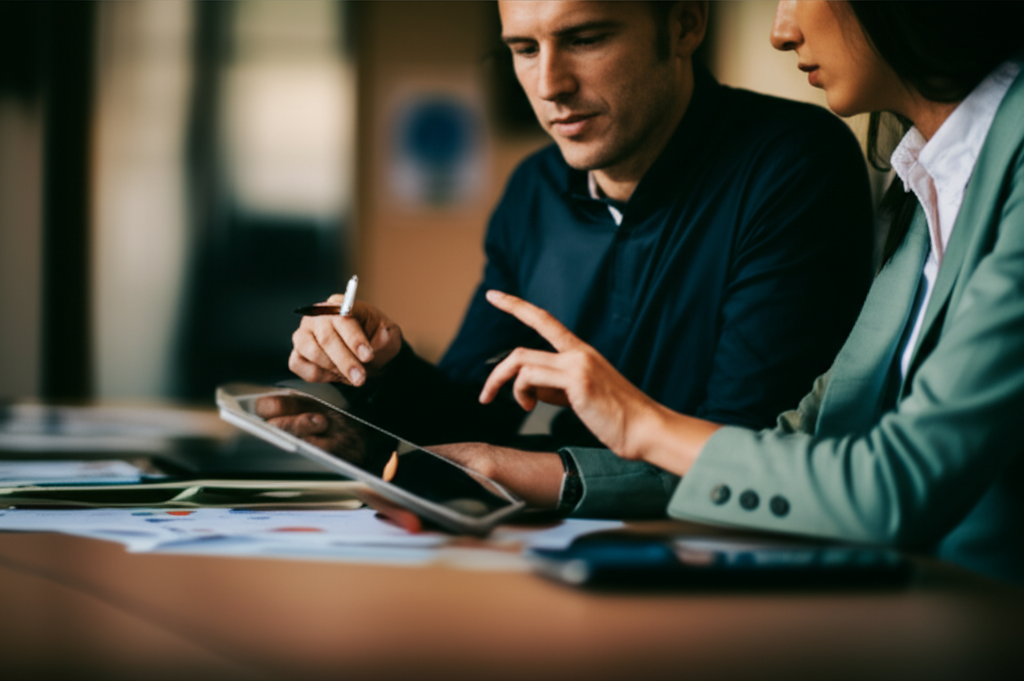Bonds in a Conservative Investment Strategy
Ellie Moore

Photo: Bonds in a Conservative Investment Strategy
Bonds in a Conservative Investment Strategy: A Guide to Building Stability in Your Portfolio
Investing can feel overwhelming, especially when you're looking for stable, reliable growth. Enter bonds: the cornerstone of any conservative investment strategy. If you're new to investing or simply looking to mitigate risks while securing consistent returns, bonds deserve your attention. This article will explore why bonds are vital for conservative investors, how they work, and how to make them part of a well-rounded portfolio.
What Are Bonds and Why Are They Important?
Bonds are essentially loans made by an investor to a borrower typically a government or corporation. In exchange for your investment, the borrower agrees to pay periodic interest (known as the coupon) and return the principal amount at maturity.
Why Bonds Suit Conservative Investors
- Predictable Income: Bonds offer regular interest payments, providing a steady income stream.
- Lower Risk: Compared to stocks, bonds are generally less volatile, making them a safer choice for risk-averse investors.
- Diversification: Adding bonds to your portfolio helps reduce overall risk by balancing higher-risk assets like stocks.
- Capital Preservation: For investors nearing retirement, bonds can safeguard your principal while delivering modest returns.
Types of Bonds for Conservative Investment Strategies
Not all bonds are created equal. Here’s a breakdown of the most common types of bonds and their suitability for conservative investors.
1. Government Bonds
- Examples: U.S. Treasury Bonds, Savings Bonds, Municipal Bonds
- Why Choose Them: Backed by governments, these bonds are considered low-risk. Treasury bonds, for instance, are backed by the full faith and credit of the U.S. government.
2. Corporate Bonds
- Examples: Investment-Grade Bonds, High-Yield (Junk) Bonds
- Why Choose Them: Corporate bonds from financially stable companies offer higher returns than government bonds, though they carry slightly more risk.
3. Municipal Bonds
- Examples: Revenue Bonds, General Obligation Bonds
- Why Choose Them: Issued by state or local governments, these bonds often come with tax advantages, making them attractive to high-income investors.
4. Bond Funds
- Examples: ETFs, Mutual Funds Focused on Bonds
- Why Choose Them: Diversified and professionally managed, bond funds are ideal for investors seeking convenience and reduced exposure to individual bond risks.
Key Benefits of Incorporating Bonds in Your Portfolio
Conservative investors prioritize safety, consistent income, and long-term growth. Here’s how bonds deliver on these fronts:
1. Risk Mitigation
- Bonds act as a buffer during economic downturns. When stocks lose value, bond prices often stabilize or even rise, offering protection against losses.
2. Stable Returns
- While returns from bonds may not match the highs of stocks, their predictability makes them an excellent choice for those valuing stability.
3. Liquidity
- Many bonds, especially those traded in the secondary market, can be sold relatively easily, ensuring access to funds when needed.
4. Inflation Protection
- Certain bonds, like Treasury Inflation-Protected Securities (TIPS), are designed to adjust with inflation, preserving purchasing power.
Building a Conservative Bond Portfolio
Creating a balanced bond portfolio tailored to your financial goals requires careful consideration. Follow these steps to ensure your bond investments align with your risk tolerance and time horizon.
Step 1: Define Your Investment Goals
- Are you saving for retirement, generating passive income, or preserving capital? Your goals will influence the type and mix of bonds you choose.
Step 2: Choose the Right Mix
- Short-Term Bonds: Ideal for those seeking quick access to funds.
- Long-Term Bonds: Offer higher yields but come with increased interest rate risk.
- Diversification: Include a mix of government, corporate, and municipal bonds to balance risk and return.
Step 3: Monitor Interest Rate Trends
- Interest rates directly impact bond prices. When rates rise, bond prices typically fall, and vice versa. Understanding this relationship helps optimize your buying and selling decisions.
Step 4: Rebalance Regularly
- Periodically review your portfolio to ensure it remains aligned with your goals. Adjust allocations as necessary based on market conditions or life changes.
Common Pitfalls to Avoid
While bonds are less risky than stocks, they are not without challenges. Avoid these mistakes to maximize the benefits of bond investing:
- Ignoring Credit Ratings: Low-rated bonds (junk bonds) carry higher default risks. Stick to investment-grade bonds for safety.
- Overlooking Fees: Bond funds often come with management fees that can erode returns. Compare options to minimize costs.
- Failing to Diversify: Concentrating your investments in a single type of bond increases risk. Spread investments across sectors and maturities.
The Role of Bonds in Different Life Stages
Your age and financial goals play a crucial role in determining the proportion of bonds in your portfolio. Here’s a simple guide:
- Young Investors (20s–30s): Focus on growth-oriented assets like stocks but include 10–20% in bonds for stability.
- Midlife Investors (40s–50s): Shift towards a balanced portfolio with 40–60% in bonds.
- Retirees (60+): Prioritize capital preservation with 70–90% of your portfolio in bonds or other low-risk assets.
FAQs About Bonds in Conservative Investing
Q1: Are bonds a good investment in 2025?
Absolutely. With rising interest rates and economic uncertainty, bonds remain a safe haven for conservative investors.
Q2: What’s the difference between bonds and stocks?
While stocks represent ownership in a company, bonds are loans to a corporation or government. Stocks are riskier but offer higher growth potential, whereas bonds prioritize safety and consistent returns.
Q3: How much of my portfolio should be in bonds?
It depends on your age, risk tolerance, and financial goals. A common rule of thumb is to subtract your age from 100 to determine your stock allocation, with the remainder in bonds.
Q4: Can I lose money with bonds?
Yes, but the risk is lower compared to stocks. Factors like rising interest rates, credit downgrades, or defaults can impact bond prices.
Conclusion: Why Bonds Are a Must for Conservative Investors
Bonds are the bedrock of a conservative investment strategy, offering stability, consistent returns, and diversification. By understanding the different types of bonds, their benefits, and how to incorporate them into your portfolio, you can create a strategy tailored to your needs.
Ready to take the next step? Share your thoughts in the comments, or explore our other articles on conservative investing for more insights. Let’s build your financial future one bond at a time!
Finance & Investment
View All
March 28, 2025
How Interest Rates Impact Asset ClassesLearn how changes in interest rates affect various asset classes, from stocks to bonds. Make informed decisions in changing markets!
Ellie Moore

January 19, 2025
MSFT Stock Updates on Yahoo FinanceStand out online with expert SEO content. Go beyond keywords to create high-quality, valuable content that builds trust, boosts rankings, and converts.
Ellie Moore

November 28, 2025
Buy Homes with Owner Financing EasilyGo beyond keywords! Learn to craft expert SEO content that truly ranks, builds trust, and converts visitors into loyal customers.
Ellie Moore

July 8, 2025
What Does a Finance Analyst DoDominate search in 2025 with expert SEO content. Discover how E-E-A-T builds authority, boosts rankings, and future-proofs your digital strategy.
Ellie Moore

July 3, 2025
Chase Car Financing Contact GuideUnlock SEO success! Learn to craft expert content that deeply engages your audience, builds trust, and ranks high for ultimate business growth.
Ellie Moore

April 3, 2025
Finance Definition Explained ClearlyElevate your content! Discover how expert SEO, E-E-A-T, and user-centricity drive trust, authority, and top search engine rankings.
Ellie Moore
Insurance
View AllDon't leave assets vulnerable! Learn how Complete General Insurance Plans provide unwavering protection, optimize risk, and ensure financial stability.
Ellie Moore
Maximize your car accident claim! Discover why top-rated lawyers are essential for navigating complex insurance, securing optimal compensation & justice.
Ellie Moore
Explore emerging trends reshaping insurance in 2025. Stay ahead with insights on AI, blockchain, and coverage innovations.
Ellie Moore
Don't leave assets vulnerable! Premium Shelter Insurance offers unparalleled protection, comprehensive coverage, and financial stability for policyholders & ris...
Ellie Moore
Facing insurance challenges? Discover Premium Citizens Insurance Plans. Secure your assets, gain peace of mind, and navigate complex markets with confidence.
Ellie Moore
Secure optimal car insurance! Our guide helps policyholders & risk managers find top providers, maximize value, protect assets, and avoid overpaying.
Ellie Moore
Education
View AllResearch universities play a key role in advancing knowledge. Explore how they drive innovation, discovery, and societal progress.
Read MoreCompetency-based education focuses on mastery over seat time. Learn how this model is reshaping how we measure student success.
Read MoreExplore the benefits of hybrid learning models. Learn how to balance online and face-to-face teaching for a more flexible education experience.
Read MoreSudbury schools embrace radical self-direction in learning. Learn how they empower students to take full control of their education journey.
Read MoreLifelong learning is the new normal! Discover why continuous learning is essential for personal growth, career success, and adapting to change.
Read MoreLearn effective classroom strategies to manage ADHD. Discover how teachers can support students with ADHD for better learning outcomes.
Read MorePopular Post 🔥
View All
1
2
3
4
5
6
7
8
9
10
Health






Automotive
View All
February 12, 2025
Leasing vs. Financing a Car: What’s Best for You?
Confused about leasing or financing a car? Compare the pros and cons to find the best option for your budget and lifestyle. Make the right choice!

July 12, 2025
Find Trusted Automotive Machine Shop Near Me
For complex engine issues, trust a specialized automotive machine shop. Get precision repairs & enhance performance. Find a reputable one near you!

August 29, 2025
Silverlake Automotive Customer Approved Service
Tired of auto repair distrust? Silverlake Automotive is your customer-approved choice for reliable, transparent, and expert vehicle care.

August 27, 2025
Peppers Automotive Paris TN Reviews And Info
Peppers Automotive Paris TN: Your go-to for new & used Toyota, Chevy, GMC, CDJR vehicles & expert service. Find your perfect car or truck today!

July 28, 2025
Oaks Automotive Tips For Long Lasting Repairs
Invest in your vehicle's future with Oaks Automotive's long-lasting car repairs. We ensure quality service, preventing recurring issues for peace of mind.

July 17, 2025
JT Automotive Services Worth Checking Out
Unlock peace of mind & vehicle longevity. Discover why choosing the right car care partner, like JT Automotive Services, truly matters.

















